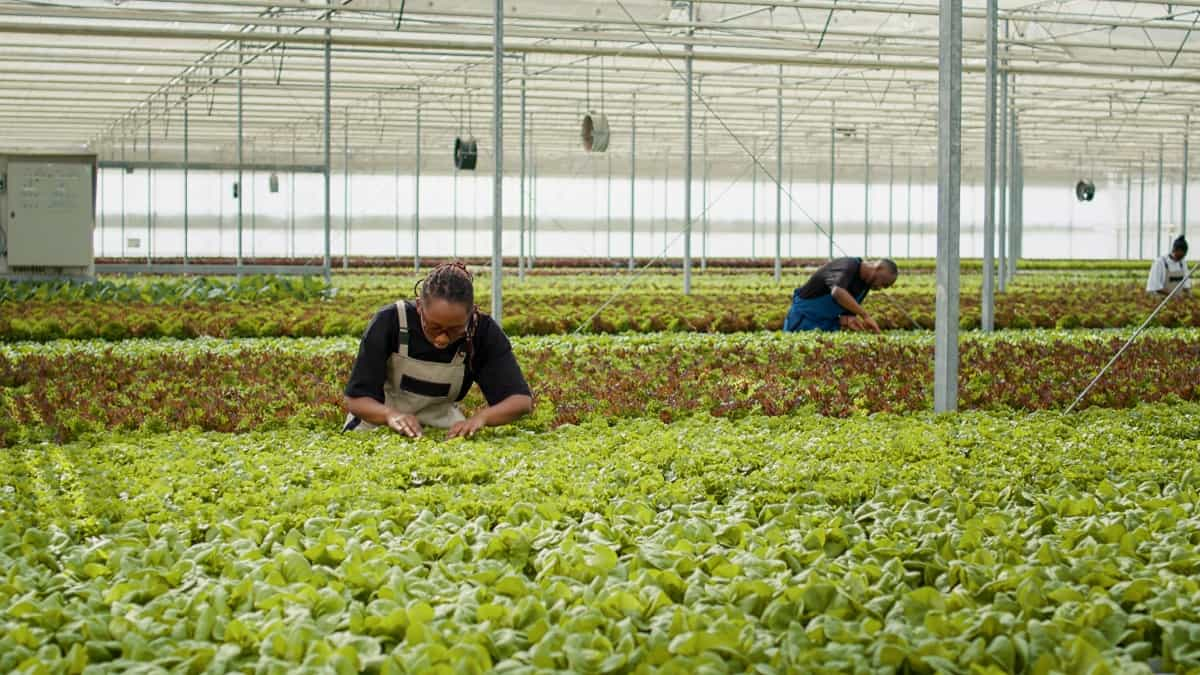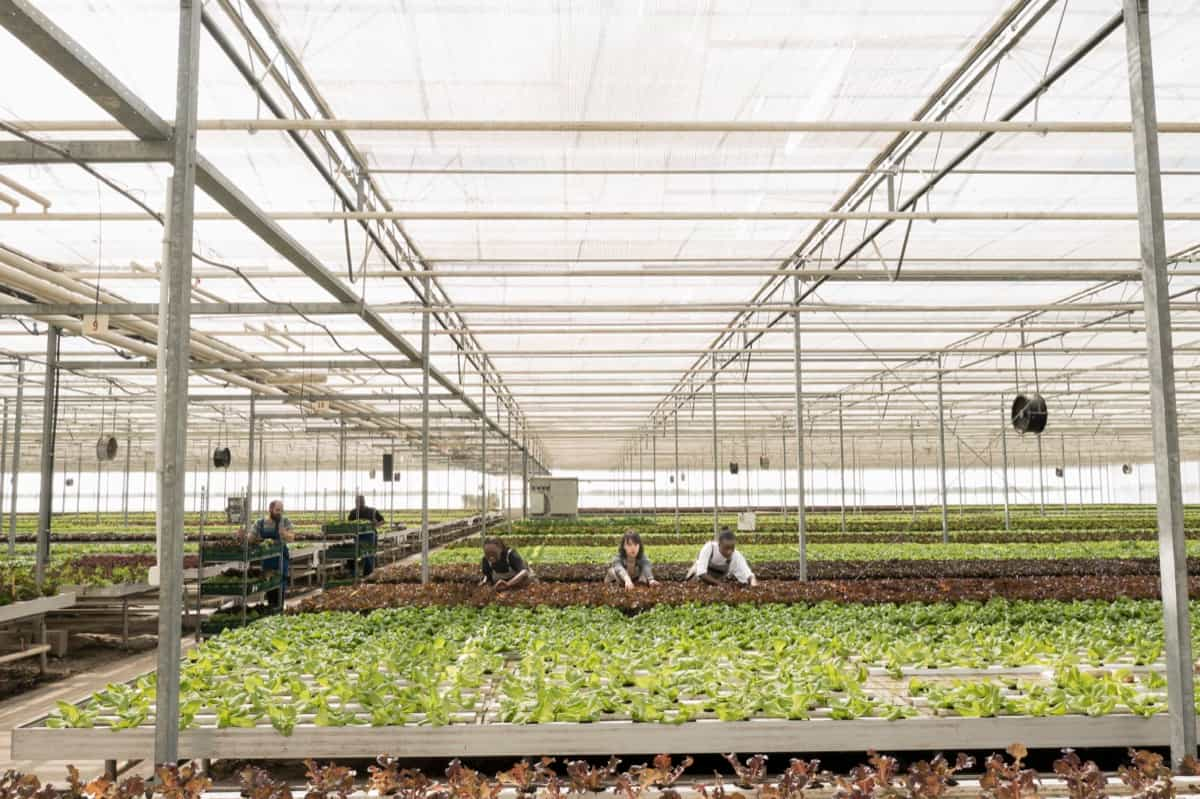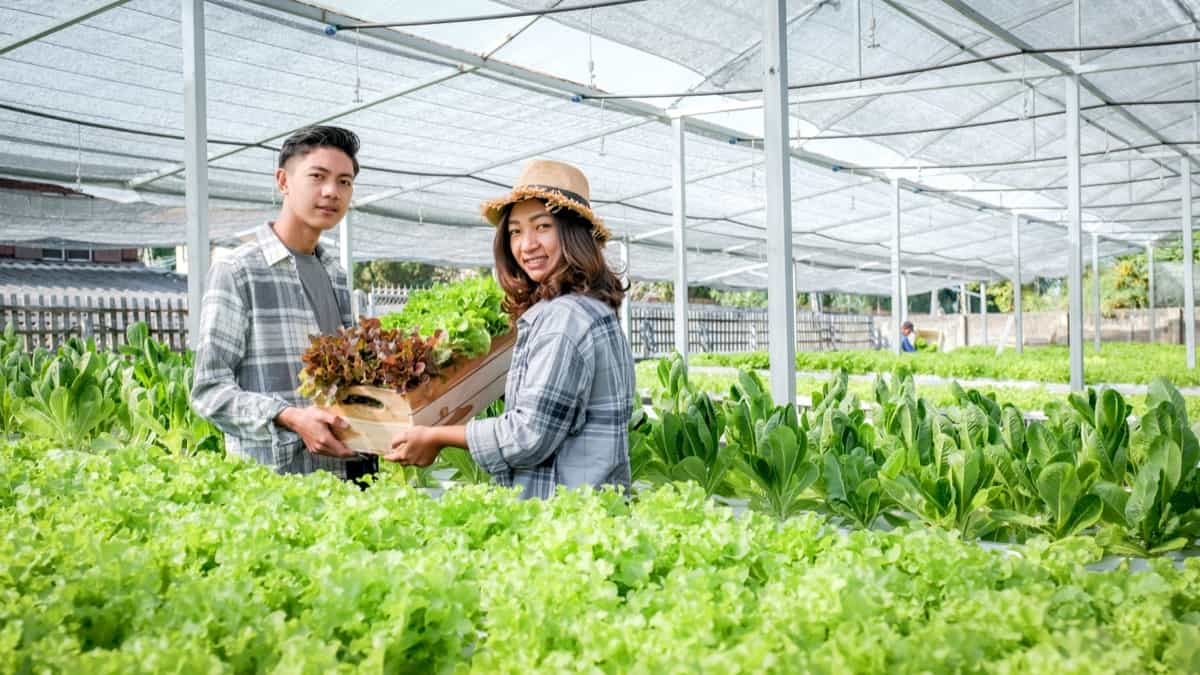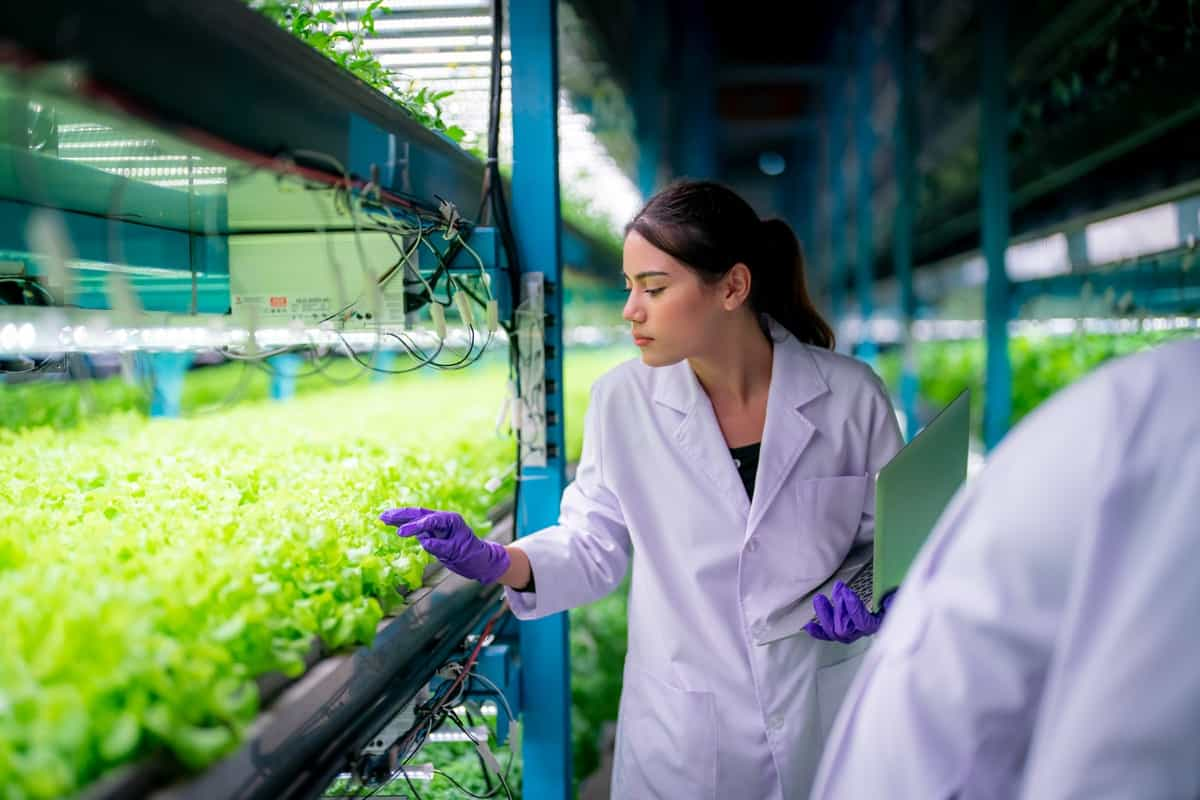Welcome to our comprehensive guide on Hydroponic pest and Disease Management! Whether you’re a seasoned hydroponic enthusiast or just starting your journey, one thing remains clear: pests and diseases can wreak havoc on your thriving hydroponic system.

In this blog, we’ll delve into pest and disease control, prevention, and treatment, using simple language and practical tips to help you maintain a healthy and bountiful hydroponic garden. From identifying common culprits to implementing effective strategies, get ready to safeguard your plants and ensure a flourishing, pest-free hydroponic oasis.
Management of Hydroponic Pests and Diseases
Indoor Hydroponic Plant Pests
- Spider Mites: Tiny arachnids causing serious damage; identify them through spider-like webbing or streaks of Spider Mite blood when wiped under leaves.
- Thrips: Small metallic black specks on leaves, leading to brown, dry, and yellowing leaves due to their sap-sucking behavior.
- Aphids: Green, black, or gray plant lice that weaken plants by sucking juice, often gathering around stems.
- Whiteflies: Small, white moth-like insects that fly away when disturbed; they cause white spots and yellowing due to sap-sucking.
- Fungus Gnats: Adult gnats are harmless, but larvae feed on roots, slowing plant growth and causing potential plant death.
Hydroponic Pest Control Methods
- Sticky Traps: Hang traps to catch and identify pests, such as blue traps for thrips and yellow traps for fungus gnats and whiteflies.
- Various Sprays: Avoid chemical poisons and try organic interventions like Azamax or Rhino Skin, which fortify plants against pests and diseases.
- Beneficial Predators: Introduce beneficial predatory creatures like nematodes to hunt and kill pests.
Indoor Hydroponic Plant Diseases
- Powdery Mildew: White powder-like substance on leaves and stems, causing stunted growth, leaf drop, and yellowing.
- Downy Mildew: Appears mostly on the underside of leaves, leading to yellowing and potential misidentification with powdery mildew.
- Gray Mold: Spots on leaves turn into fuzzy gray abrasions, eventually deteriorating plants.
- Root Rot: Excess water and pathogens in the medium cause wilting, yellowing, and mushy roots.
- Iron Deficiency: Lack of iron leads to yellow leaves with green veins, often misdiagnosed as other diseases.
In case you missed it: How to Build a Hydroponic Unit with PVC Pipes: DIY in Simple Steps

Preventing Indoor Plant Diseases
- Wear Clean Clothes: Wear clean clothes and shoes to avoid introducing pests and diseases from outdoor soils.
- Clean Up Spills: Prevent mold and mildew by managing water use and cleaning up spills and runoff.
- Keep Plants Clean: Remove dead plant matter and prune diseased leaves/branches to minimize pests and diseases.
Using Proper Hydroponics Base Nutrients
- pH Perfect Base Nutrients: Maintain optimal pH levels (5.5-6.3) using Advanced Nutrients’ pH Perfect Base Nutrients to strengthen plants and improve disease resistance.
- Coco-Specific Base Nutrients: For coco coir growing, use Advanced Nutrients pH Perfect Sensi Coco Grow A&B and pH Perfect Sensi Coco Bloom A&B, containing the right amount of iron for coco coir.
Supplements for Plant Health in Hydroponic
- Rhino Skin: Soluble potassium silicate formulation that strengthens plant cell walls, protecting against pests, diseases, and external stresses, while increasing resin production.
- Sensi Cal-Mag Xtra: Essential for calcium and magnesium deficiencies, promoting healthy growth and combating yellowing leaves.
- Revive Concentrated solution with rejuvenating substances to revive wilted, unhealthy plants and provide healing nutrition quickly.
Pest and Disease Control in Hydroponics
In hydroponic systems, pests and diseases can quickly spread and cause significant harm to plants. Hydroponic growers can significantly reduce the risk of pests and diseases by following these management practices, ensuring a successful and productive indoor garden. Effective management practices are essential to combat these issues and ensure a healthy and thriving hydroponic garden.
- Maintain good system hygiene: Promptly remove diseased foliage and other waste material from the growing area. Keep surfaces clean from dust, dirt, and spillages.
- Implement pest management: Filter the air supply and minimize traffic to prevent insects from entering the system. Routinely inspect plants with a magnifying glass and use “yellow sticky traps” for early detection.
- Keep nutrient solution clean: Dose with FloraMax System Maintenance to maintain the cleanliness of the nutrient solution.
- Control humidity: Keeping relative humidity at 50-70% prevents spore germination for many diseases, striking a balance between disease prevention and plant growth.
- Pre-treat make-up water: Treat untreated surface waters or stored water with Pythoff before use to prevent disease.
- Choose a medium with good drainage properties: Proper drainage prevents fungal diseases and pest infestations.
- Minimize plant stress: Maintain appropriate water and air temperature, light intensity, nutrient concentration, and pH levels to promote strong and healthy plants that can defend against disease attacks.
- Thoroughly clean the system between crops: Follow a step-by-step cleaning process, including flushing with chlorine solution and fresh water, to prevent disease problems in the next crop.
- Use disease-free seeds and cuttings: Source seeds and cuttings from reliable suppliers to ensure healthy and disease-free plants.
In case you missed it: Ways to Use Neem Oil in Plants: Benefits in Agriculture, Application Method in Garden, and Uses in Hydroponics

Aphids in Hydroponics: Control, Prevention, and Treatment
Aphids are common pests that can weaken hydroponic plants by sucking sap juice out of leaves, causing yellowing and stunted growth. To minimize aphid infestations, maintain a clean and hygienic growing environment, remove debris promptly, and practice good hygiene. Introduce natural enemies like ladybugs or lacewings to control aphid populations. Use sticky traps to catch adult aphids and reduce their numbers.
Apply neem oil as a natural insecticide, Horticultural oil to suffocate aphids and prevent further infestations. Regularly prune affected plant parts to remove aphids and prevent their spread to healthy areas. Use non-toxic insecticidal soap to kill aphids on contact while being safe for plants. Regularly inspect plants for aphids to catch infestations early and take immediate action. Finally, quarantine new plants for a few days before introducing them to the hydroponic system to check for aphid presence.
Spider Mites in Hydroponics: Control, Prevention, and Treatment
Spider mites are tiny arachnids found in indoor hydroponic gardens, causing significant damage to plants by sucking sap from leaves and stems. Identifying and detecting infestations involves looking for spider-like webbing on leaves and using a tissue to wipe the underside of leaves. Routine inspection with a magnifying glass can aid in early detection.
Preventing infestations involves good system hygiene, removing diseased foliage, and maintaining optimal water and air temperature, light intensity, and nutrient levels. Control methods include using sticky traps, considering predatory creatures like nematodes, and using organic interventions like Azamax. Treatment options include Azamax and Rhino Skin, which provide a protective coat for plants against pests.
Fungus Gnats in Hydroponics: Control, Prevention, and Treatment
Fungus gnats are a common issue in hydroponic systems, as their larvae feed on roots, slowing plant growth and potentially causing death. To control fungus gnats, maintain good system hygiene, promptly clean up spills and debris, and minimize excess moisture. Sticky traps can be used as early detection methods. Treatment involves introducing beneficial predatory creatures like nematodes to hunt and kill larvae.
Yellow sticky traps capture adult gnats and reduce their population. Natural insecticides like neem oil or beneficial nematodes can help control fungus gnats. However, insecticidal soap should be used cautiously to avoid harming beneficial insects. Proper drainage in the hydroponic system can discourage fungus gnat breeding. In extreme cases, a thorough system clean-up and replacing the growing medium might be necessary to eliminate the problem.
Powdery Mildew Control in Hydroponics
A fungal disease known as powdery mildew affects hydroponic plants, resulting in white powdery patches on leaves and stems. Erysiphales fungi cause it and thrive in warm and humid conditions. The disease can cause reduced photosynthesis, stunted growth, and even plant death. It spreads through airborne spores, infected plant material, or contaminated tools.
In case you missed it: Management of Vertical Farming Pests and Diseases: Control, Prevention, and Treatment

High humidity levels, inadequate air circulation, crowded plant spacing, and poor ventilation exacerbate the problem. Preventive measures include maintaining hygiene, achieving proper air circulation and humidity, inspecting plants for early signs of infection, and using fungicides and natural remedies like neem oil or baking soda solutions. Integrated pest management (IPM) plan can effectively manage powdery mildew and safeguard hydroponic crops.
Root Rot Prevention in Hydroponics
Root rot is a common and damaging disease in hydroponics, affecting plant roots, causing wilting, yellowing, and, ultimately, plant death. Pathogenic fungi like Pythium and Phytophthora thrive in excess moisture and high humidity, causing root rot. To prevent root rot, maintain proper drainage, monitor humidity levels, use reliable water sources, and pre-treat make-up water with Pythoff products.
Implement a thorough cleaning process between crops, remove plant debris, and disinfect the system with chlorine solution. Finally, start with disease-free seeds and cuttings from reputable suppliers to create a healthier, disease-resistant hydroponic garden.
Thrips Treatment in Hydroponics
Thrips are tiny insects that can cause significant damage to plants in hydroponic systems. They feed on foliage, causing pale leaves and dropping, and can target and destroy roots, posing a significant threat to plant health. Thrips spread diseases through sap transfer, making them a major concern for hydroponic growers.
To treat thrips, careful management and prevention strategies are essential. Regularly inspecting leaves, stems, medium, and roots with a magnifying glass can help detect their presence. Yellow and blue sticky traps can help identify and monitor infestations. Filtering the air supply and limiting traffic to the growing area is also important.
Treatment options include organic interventions like Azamax, which is non-toxic, and Rhino Skin, a foliar application potassium silicate product that strengthens plants and maximizes resin glands. Overall, vigilant management, good system hygiene, and preventive measures can help control and treat thrips in hydroponic setups, ensuring healthy and thriving plants.
In case you missed it: How to Identify and Control Celery Pests and Diseases: Management Strategies

Whitefly Control in Hydroponics
Whiteflies are small, winged insects in the Aleyrodidae family that cause damage to plants in hydroponic systems. They feed on sap, causing damage and yellowing leaves. Biological control agents like predatory insects like ladybugs or lacewings can be used to control whiteflies. Sticky traps can capture adult whiteflies and prevent their spread. Parasitic wasps targeting whiteflies can also be an effective control strategy. Insecticidal soaps or neem oil are environmentally friendly and safe for plants, effectively repelling and killing whiteflies.
Bacterial Diseases in Hydroponics
Bacterial diseases in hydroponic systems can cause damage and reduced yields. Common diseases include Bacterial Soft Rot, Crown Gall, and Bacterial Leaf Spot, which thrive in warm and humid conditions. They spread through contaminated water, tools, or infected plant material. Control and prevention include strict hygiene, avoiding overcrowding, using clean, pathogen-free water, maintaining optimal environmental conditions, and regularly inspecting plants for early signs of diseases.
Treatment methods for bacterial diseases in hydroponics are limited, but prevention is crucial. Pruning and removing infected plant parts can prevent bacteria from spreading to healthy areas. Copper-based bactericides may offer some control, but they should be cautiously used. By being vigilant and adopting preventive measures, hydroponic growers can minimize the impact of bacterial diseases and promote a healthier and more productive growing environment. Early detection and good hygiene are key to maintaining disease-free hydroponic systems.
Viral Diseases in Hydroponics
Viral diseases can significantly impact hydroponic plants, causing stunted growth, yellowing leaves, mottling, and distorted plant parts. To prevent viral spread, strict hygiene measures, Integrated Pest Management (IPM), biological controls, disinfection, removal of infected plants, certified disease-free plant material, isolation and monitoring, and early detection are essential. These microscopic organisms are difficult to detect and treat due to their size and rapid spread.
By implementing these measures, you can strengthen your plants with proper nutrients and environmental conditions and increase the chances of controlling viral infections. Remember, prevention is the best defense against viral diseases in hydroponics, so stay vigilant, maintain good hygiene, and consider implementing biological controls to safeguard your plants.
Leaf Miners in Hydroponics
Leaf miners are pests found in hydroponic systems that cause damage to plant leaves. These larvae, belonging to various insect species, create tunnels within leaves, disrupting nutrient flow and causing unsightly damage. Identifying and controlling leaf miners early, as mature mines are harder to treat.
In case you missed it: Rice Cultivation in Greenhouse: A Profitable Business Plan for Sustainable Farming

Effective control measures include introducing beneficial insects like parasitoid wasps, sticky traps, and natural repellents like neem oil or insecticidal soap sprays. Proper system hygiene and promptly removing affected leaves are essential to prevent infestations. Integrated Pest Management (IPM) techniques offer a holistic approach to managing leaf miners in hydroponics, promoting healthier and thriving plants.
Mold and Mildew Prevention in Hydroponics
To prevent mold and mildew in hydroponics, maintain optimal humidity between 50-70%, use proper air circulation, maintain cleanliness, avoid overwatering, and monitor temperature. Choose resistant varieties, isolate affected plants, and use organic fungicides as preventive measures or at the first sign of growth.
Regularly clean and sanitize surfaces, equipment, and containers to minimize mold and mildew spore presence. Monitor temperature and use organic fungicides as preventive measures or at the first sign of growth. Finally, sterilize growing media before starting a new crop to eliminate any lingering mold or mildew spores.
Conclusion
Proactive and consistent management practices are key to combating hydroponic pests and diseases successfully. By employing preventive measures, regular monitoring, and timely treatments, growers can maintain a healthy and vibrant hydroponic garden free from harmful infestations and infections.
- Types of Pesticides Used in Agriculture: A Beginner’s Guide
- Economical Aquaculture: A Guide to Low-Budget Fish Farming
- 15 Common Planting Errors That Can Doom Your Fruit Trees
- How to Make Houseplants Bushy: Effective Tips and Ideas
- Innovative Strategies for Boosting Coconut Pollination and Yield
- Pollination Strategies for Maximum Pumpkin Yield
- The Complete Guide to Chicken Fattening: Strategies for Maximum Growth
- Natural Solutions for Tulip Problems: 100% Effective Remedies for Leaf and Bulb-Related Issues
- Revolutionizing Citrus Preservation: Towards a Healthier, Greener Future
- Natural Solutions for Peony Leaf and Flower Problems: 100% Effective Remedies
- Maximizing Profits with Avocado Contract Farming in India: A Comprehensive Guide
- Natural Solutions for Hydrangea Problems: 100% Effective Remedies for Leaf and Flowers
- The Ultimate Guide to Choosing the Perfect Foliage Friend: Bringing Life Indoors
- From Sunlight to Sustainability: 15 Ways to Use Solar Technology in Agriculture
- The Ultimate Guide to Dong Tao Chicken: Exploring from History to Raising
- The Eco-Friendly Makeover: How to Convert Your Unused Swimming Pool into a Fish Pond
- Mastering the Art of Delaware Chicken Farming: Essentials for Healthy Backyard Flocks
- 20 Best Homemade Fertilizers for Money Plant: DIY Recipes and Application Methods
- How to Craft a Comprehensive Free-Range Chicken Farming Business Plan
- Brighten Your Flock: Raising Easter Egger Chickens for Beauty and Bounty
- How to Optimize Your Poultry Egg Farm Business Plan with These Strategies
- Subsidy for Spirulina Cultivation: How Indian Government Schemes Encouraging Spirulina Farmers
- Ultimate Guide to Raising Dominique Chickens: Breeding, Feeding, Egg-Production, and Care
- Mastering the Art of Raising Jersey Giant Chickens: Care, Feeding, and More
- Ultimate Guide to Raising Legbar Chickens: Breeding, Farming Practices, Diet, Egg-Production
- How to Raise Welsummer Chickens: A Comprehensive Guide for Beginners
- How to Protect Indoor Plants in Winter: A Comprehensive Guide
- Ultimate Guide to Grow Bag Gardening: Tips, Tricks, and Planting Ideas for Urban Gardeners
- Guide to Lotus Cultivation: How to Propagate, Plant, Grow, Care, Cost, and Profit
- Agriculture Drone Subsidy Scheme: Government Kisan Subsidy, License, and How to Apply Online
- Ultimate Guide to Raising Araucana Chickens: Breed Profile, Farming Economics, Diet, and Care
- Bringing Hydroponics to Classroom: Importance, Benefits of Learning for School Students
- Ultimate Guide to Raising Polish Chickens: Breed Profile, Farming Economics, Diet, and Care
- Ultimate Guide to Raising Australorp Chickens: Profile, Farming Economics, Egg Production, Diet, and Care
- Silkie Chicken Farming: Raising Practices, Varieties, Egg Production, Diet, and Care
- Sussex Chicken Farming: Raising Practices, Varieties, Egg Production, Diet and Care
\